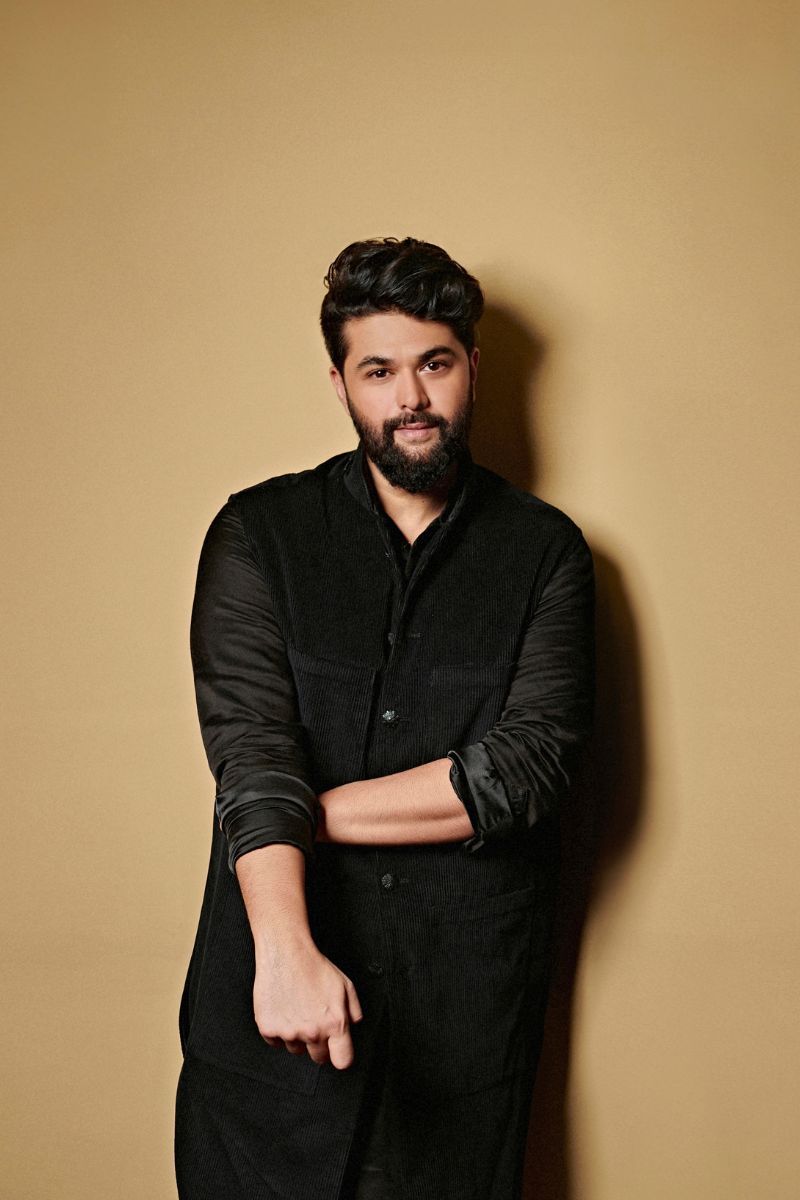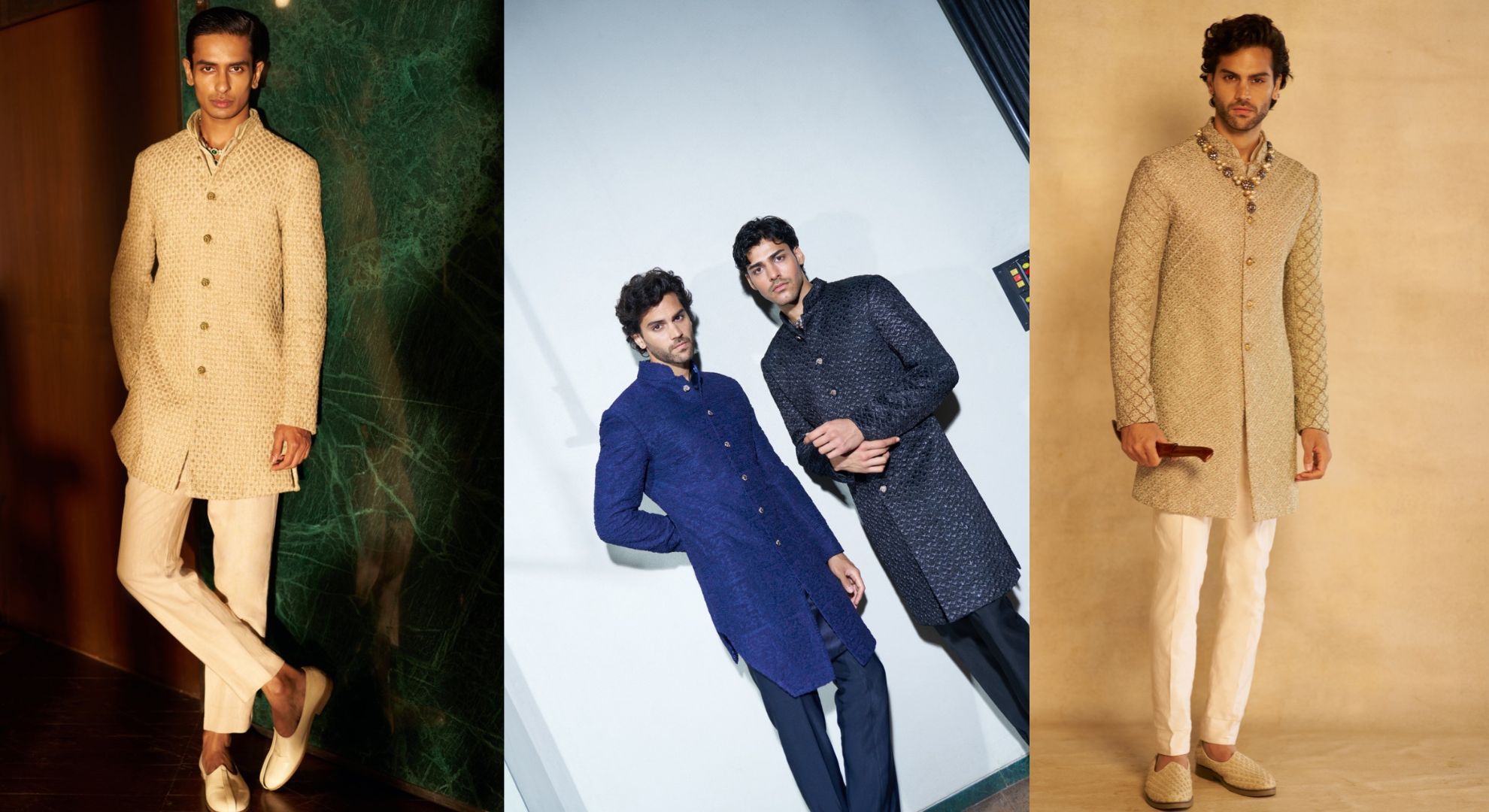Indian weddings aren’t shrinking, but the way men dress for them definitely is. The old-school idea of the stiff, bejewelled groom is being replaced with something sharper, lighter and far more personal. At the centre of this shift is Kunal Rawal, who has just opened a new store in Kolkata and continues to champion what he calls the “Modern Maharaja.” His clothes aren’t costumes. They are engineered for movement, built for versatility and designed to say something about the man wearing them. Whether it is coded embroidery, safa pins that actually work or brocades reimagined for men rather than borrowed from women’s wardrobes, Rawal is dismantling the one-time outfit mindset. In his words, the Indian groom does not want a look he can only stand still in. He wants something he can live in.
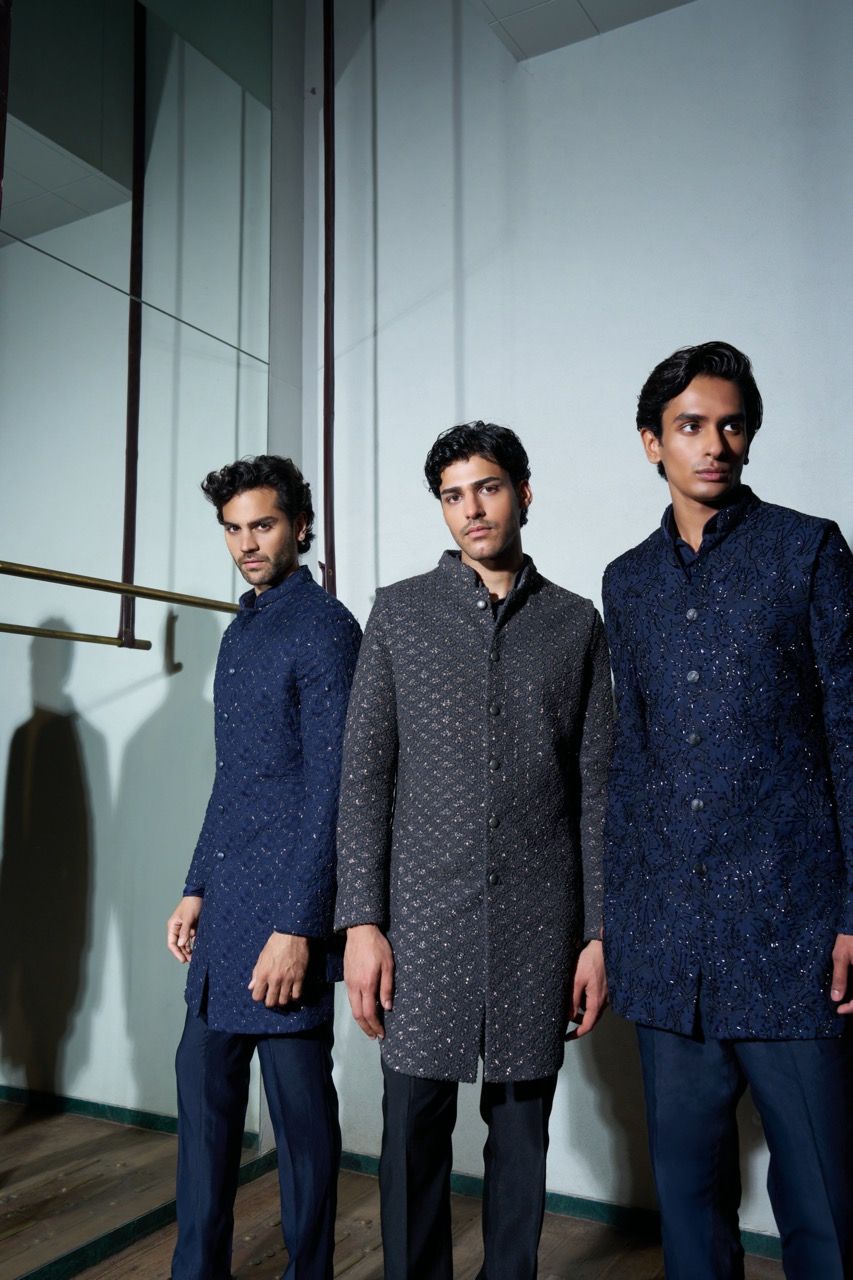
Grooms today seem braver with fashion than ever. What is the biggest shift you have noticed in how men approach their wedding look?
The biggest shift is practicality. Men do not want a one-time outfit anymore. They want versatile pieces they can restyle and actually enjoy wearing. That is why I design lightweight layers, breathable linings and silhouettes that let you dance without thinking twice. The focus is also on self-expression. Grooms want coded details, hidden messages, new colours, linings with wedding dates and textures that reflect their story.
That’s why the world of Kunal Rawal focuses on versatility. A single look that can transition from sehrabandi to baraat to pheras. Lightweight layers that don’t weigh you down, absorbent linings that work with the climate, angular cuts that let you move, even dance, without thinking twice. The idea is to make occasionwear that isn’t just for standing still, but for enjoying. At the end of the day, comfort is still the cornerstone.
What is the one styling mistake you wish grooms would stop making?
Overdoing it. Less is always more. Too many accessories or predictable colour choices drown out personality. We are working on fresh hues, stoles with concealed magnets so they sit sharp and footwear that works across ceremonies without punishing you. Even the smallest details matter. Buttons, pins and closures should feel essential rather than ornamental.

Every groom wants to look stylish but not overdressed. How do you strike that balance?
For me, it comes down to proportion and restraint. Pick one element to make a statement with, whether it is texture, embroidery or silhouette, and let everything else play support. Clean cuts and considered colours solve half the problem. Confidence does the rest. The outfit should work for you, not the other way around.
We’ve been exploring shorter silhouettes, sharper tailoring, and Deco-inspired geometry to create looks that feel modern but grounded. When those foundations are strong, you don’t need heavy layering or unnecessary styling tricks.
Fabrics can make or break an outfit at an Indian wedding. Which ones are you swearing by this season?
It is never just about the fabric. It is about how it performs across a long wedding day. We have developed our own textiles and embroidery materials in-house, from tonal threadwork to French knots reimagined and oxidised zardozi in white gold. I like contrasts too. Brocades created specifically for menswear paired with fabrics that carry industrial finishes or Deco-inspired textures. The right fabric should look luxurious but it should also adapt, whether that means breathable panels, climate-ready linings or a texture that ages well enough to become an heirloom.
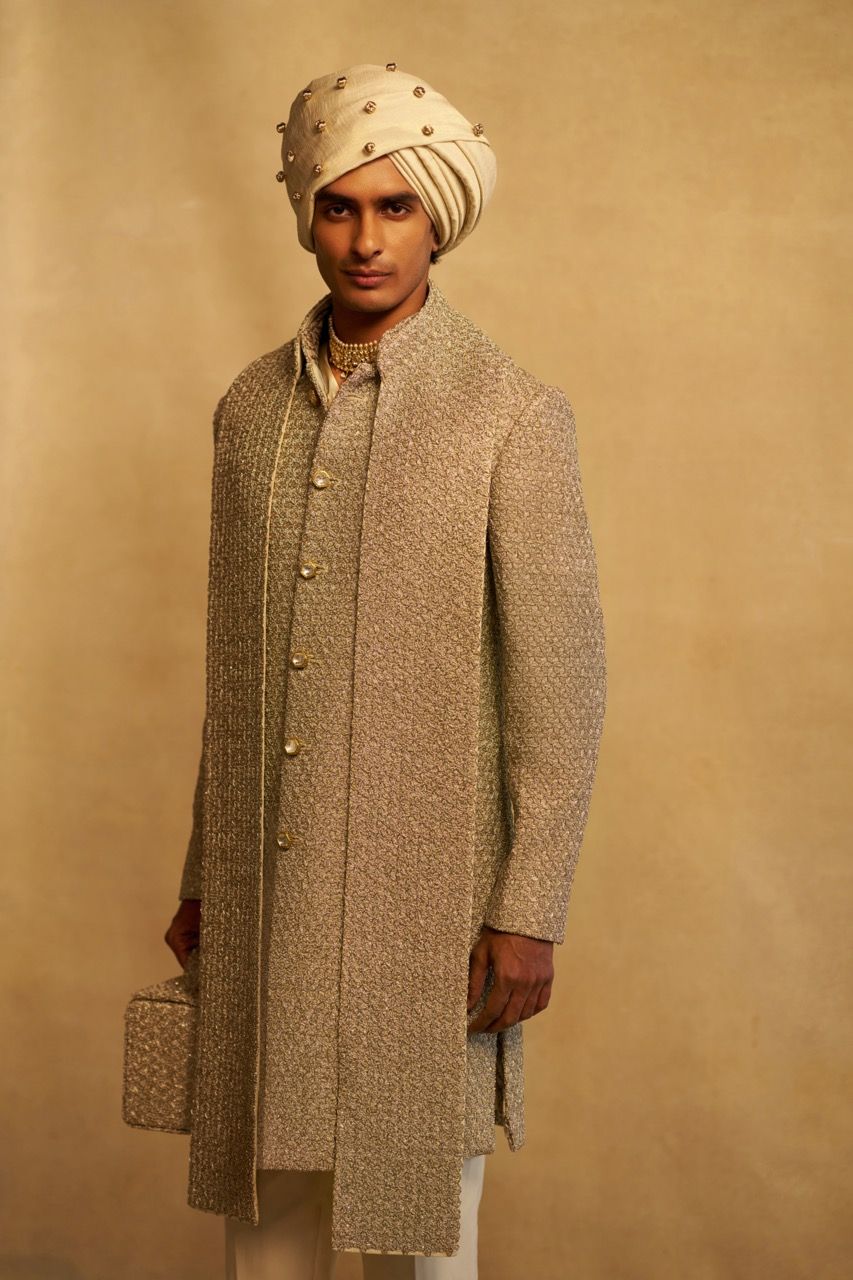
Is the sherwani still the default, or are grooms moving past it?
The sherwani will always have a place because it is iconic. What has changed is how men choose to wear it. What excites me most is the versatility. A groom today wants one look to carry him from sehra to baraat to pheras without feeling heavy or outdated. That’s why we’re layering functionality with craft, building pieces that feel rooted but present, ceremonial but still easy to move in.
What are the small, overlooked details that instantly elevate a groom’s look?
Finishing codes. A safa pin with meaning. Buttons designed as part of the garment, not an afterthought. Structured stoles that stay sharp. The groom may not think about these details at first, but once he wears them, he realises how much easier and more polished the whole experience becomes
If a groom had to invest in one statement piece he could wear beyond the wedding, what would it be?
A sharply cut jacket. It is versatile enough to wear over a kurta at the pheras, with denim the next week or with formal trousers for dinner. The right jacket carries the memory of the wedding but still feels completely new when you wear it again.
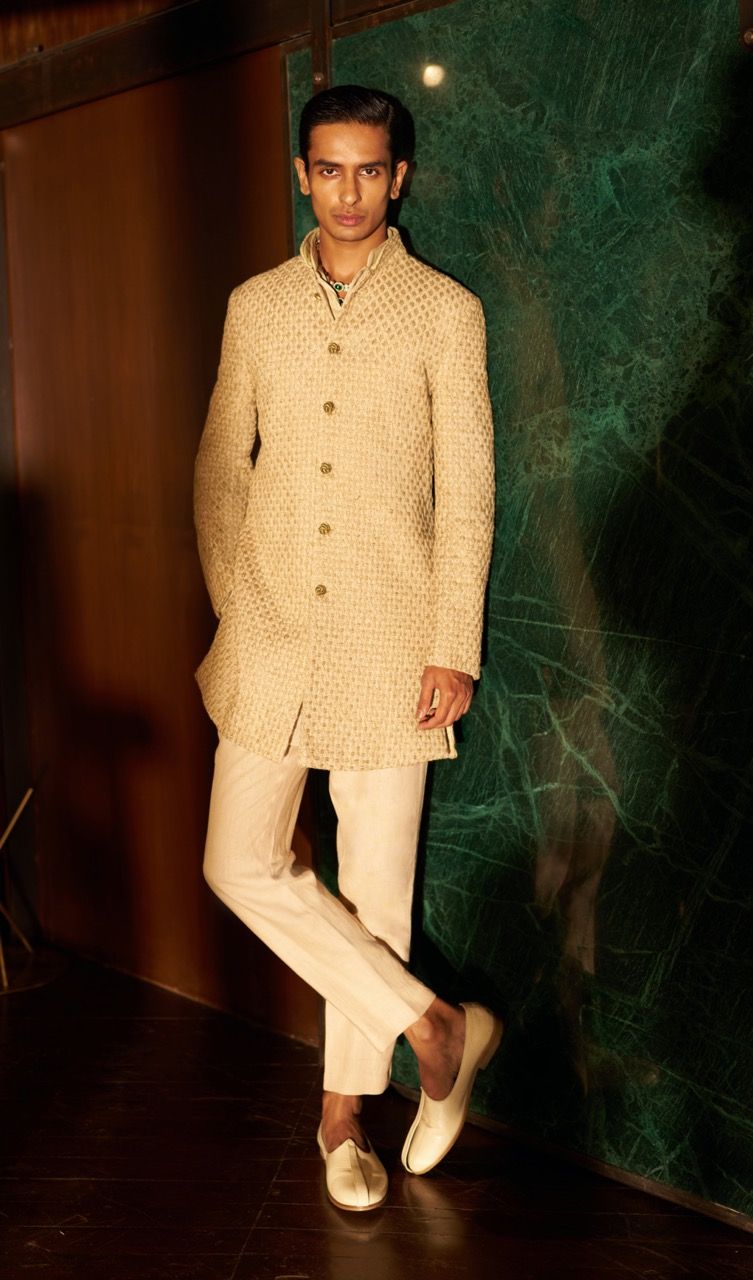
Many men are uncomfortable in Indian wear because they do not wear it often. How do you design for that?
By making it familiar. I borrow from global tailoring, from sharp shoulders to shorter hemlines and structured collars, and merge them with Indian craft. It immediately feels closer to something already in your wardrobe. I also focus on hidden luxury. Linings that feel good against the skin, closures that fasten intuitively, pockets placed where you expect them. When the outfit functions instinctively, the discomfort disappears.
What is one groomwear trend this year that you think will actually last?
Colour. Men are finally moving past reds and golds. Once they open up to that, they do not go back. It is about individuality. That is why we have created an entire palette of signature KR colours that move from festive to formal, wedding to weekend.
What is the standout innovation in this collection?
Brocade. Traditionally Banarasi brocades were designed for womenswear and later adapted for men. We reversed that. Over the last few years we have developed brocades exclusively for menswear with real gold and silver threads. This season we have re-engineered them into sharper silhouettes layered with coded details. It is heritage meeting modern masculinity and it feels completely new.
